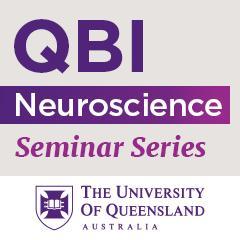Professor Christian Haass, LMU, Munich : "TREM2 in Alzheimer's disease – from microglial dysfunction to human patients"
Speaker:
Professor Christian Haass
Department of Biochemistry, Ludwig-Maximilians University, Munich, Germany
Title: TREM2 in Alzheimer's disease – from microglial dysfunction to human patients
Abstract:
Alzheimer's disease (AD) is the most prevalent form of dementia, with an estimated 35 million cases worldwide that account for 60-80% of all dementia patients. By 2050, the prevalence is expected to quadruple, such that 1 in 85 people will be living with the disease, 43% of whom are expected to need a high level of care. Early onset AD is rare, accounting for less than 5% of disease burden. It is inherited in Mendelian dominant fashion and is caused by mutations in three genes (APP, PSEN1, and PSEN2). Late onset AD is common among individuals over 65 years of age. Heritability of this form of the disease is high (79%), but the etiology is driven by a combination of genetic and environmental factors.
One of the recently identified genes encodes a microglial receptor, with mutations being found to contribute as much to AD risk as does the more common ApoE4 genotype. Variants in the triggering receptor expressed on myeloid cells 2 (TREM2) approximately triple one’s risk of developing AD. They also increase the risk for frontotemporal dementia (FTD). In the brain, TREM2 seems important for microglial signaling.
Using CRISPR/Cas9 genome editing, we generated a knock‐in mouse model for the FTD‐like syndrome associated Trem2 p.T66M mutation. Consistent with a loss‐of‐function mutation we find impaired maturation of mutant Trem2 resulting in an almost complete reduction of soluble Trem2 similar to humans carrying a homozygous p.T66M mutation. Immunohistochemistry together with in vivo TSPO small animal positron emission tomography (μPET) demonstrated an age‐dependent reduction of microglial activity. Unexpectedly, perfusion magnetic resonance imaging and FDG‐μPET imaging revealed a significant reduction in cerebral blood flow and brain glucose metabolism. Using mass spectrometry we have now determined the cleavage site of TREM2. TREM2 matures within the secretory pathway and its ectodomain is shed on the plasma membrane. In patients with autosomal dominant AD, we tested how many years before the expected symptom onset did CSF sTREM2 increase in mutation carriers (MCs) compared to noncarriers (NCs). We also determined the temporal sequence of changes in CSF sTREM2 and markers for amyloid deposition and neurodegeneration as well as cognitive performance. We included 218 participants consisting of 127 MC and 91 NC siblings from the Dominantly Inherited Alzheimer Network (DIAN). Based on our findings we propose that microglial activation occurs several years before the expected symptom onset, but after amyloidosis and neuronal injury have already occurred.
About Neuroscience Seminars
Neuroscience seminars at the QBI play a major role in the advancement of neuroscience in the Asia-Pacific region. The primary goal of these seminars is to promote excellence in neuroscience through the exchange of ideas, establishing new collaborations and augmenting partnerships already in place.
Seminars in the QBI Auditorium on Level 7 are held on Wednesdays at 12-1pm, which are sometimes simulcast on Zoom (with approval from the speaker). We also occassionally hold seminars from international speakers via Zoom. The days and times of these seminars will vary depending on the time zone of the speaker. Please see each seminar listed below for details.



